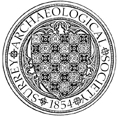Nutfield Court, Nutfield
Evaluation was carried out by S Stevens of ASE, for Rushmon Ltd, in advance of new building in the grounds of Nutfield Court, which lies adjacent to St Peter & St Paul’s church. No archaeological features or finds were found although the site appeared relatively undisturbed.


